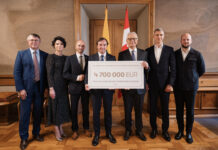
With the effects of Covid-19 receding from the forefront of world health concerns, Lithuania will have to turn its attention back to its healthcare system’s pre-pandemic problems, according to alkas.lt. European Observatory on Health Systems and Policies expert Dr. Marina Karanikolos notes that top pre-pandemic challenges for Lithuania are still heart and circulatory system diseases as well as a high suicide rate. In a 2022 survey, less than 50% of the population said that their health was good. This is the lowest indicator in the European Union.
Karanikolos shared her insights into data about the Lithuanian healthcare system at a forum on universities, medicine and healthcare organized by the Lithuanian Health Sciences University and the Vilnius University Faculty of Medicine. The financing mechanism for healthcare in Lithuania is fairly resilient and has managed to maintain health services. Growth of financing for public health from 2017-2019 increased more quickly than the GNP, showing that this area is a priority for the government.
But healthcare systems must learn from such crises, and be better-prepared for extreme situations in the future.
One of the most important long-term factors for resilience is human resources. Shortages and imbalanced assignment of staff can become a serious obstacle to reforms and efforts to strengthen the system. The main challenge is a lack of specialists and inefficient distribution both geographically and by skill. Nursing staff is especially scarce in Lithuania, at only half the number working in other EU countries. Instruction, retention and motivational issues must be addressed.
Another area of concern is the number of healthy years experienced by Lithuanians, which is lower than in other European countries. It ranks among the weakest for efffective healthcare, and registers huge household expenses for health, especially for medications and dental care.
Although government budget allocations for healthcare are rising, Lithuania is still behind other EU countries in this area.



























